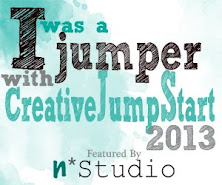Hi friends. You probably know by now that I can't make just one. I've made a number of these little boxes over the past few years. Well, I figured that I really needed to make one for the boys. Yeah. No flowers or pretties on it. How about WOOD? Well, yes, I would if I weren't afraid to use some of those woodworking machines. So what's the next best thing? Faux wood, of course.
I use faux wood techniques quite often in cardmaking, so why not on a box. The basic technique to create faux wood is to drag ink pads down the paper, repeating with several colors - mostly working in browns, but other colors work as well.
Recently, I discovered a variation from my friend Ann on Split Coast Stampers. What I like about this technique is the color is smoother than simply dragging the ink onto the paper.
Please refer to my last post for more details on the basic construction of the box.
I used a 4"x12" piece of barely banana card stock and smaller pieces for the cover and bottom. Start by scoring lines every half inch across the card stock. You can vary the width between score lines if you want. The next step can be done on either side of the paper. I prefer to use the bumpy side, because the ridges pick up the darker inks and give board delineations. The other side portrays those lines as the color of your light card stock. Either way works. Put some white glue (I'm using Elmer's school glue) on the paper and use an old gift card to spread it all over the paper. Then let it dry. I'm pretty sure you could speed up the drying with a heat gun, but the heat will bubble the glue, so I prefer to just let it air dry.
Once the glue is dry, drag your ink down the card stock in the same direction as your score lines. I used distress inks: antique linen, tea dye, vintage photo, and early espresso. The two lighter colors, you can use a heavy hand when dragging, but you want to go lighter on the vintage photo, and much less with the early espresso. I also will lightly swipe the edge of the darkest color randomly to add a bit more detail for wood grain.
Once that was dry, I measured and trimmed the ends to meet without overlapping. Then I attached the strip around the box, cut wedges along the bottom and glued those to the bottom. Circles were cut from the faux wood for the bottom and cover of the box.
I painted the edge of the cover brown to blend in with the wood. Everything was given a coat of Matte Mod Podge.
I see in the photo that I managed to get the seam right in the front, so you can see how that works. It shows less on the wood grain than it did on the previous box, but I do like the flat seam better than overlapping.
This box went together much faster than the previous box, because there was no stamping required. Other than drying time, the faux wood is a very quick technique.
Thank you so much for taking time to stop by today. Have a wonderful day.





















No comments:
Post a Comment